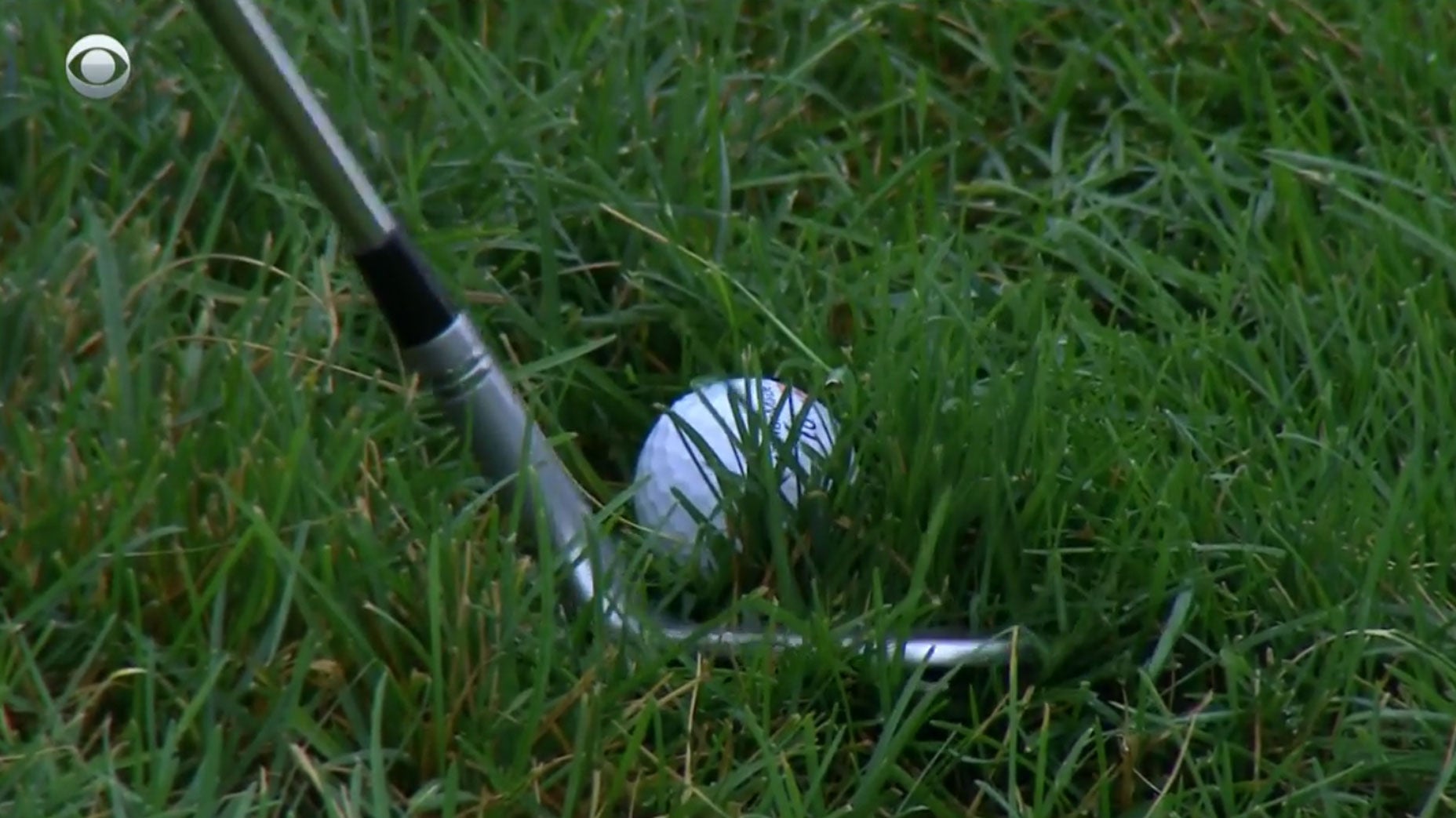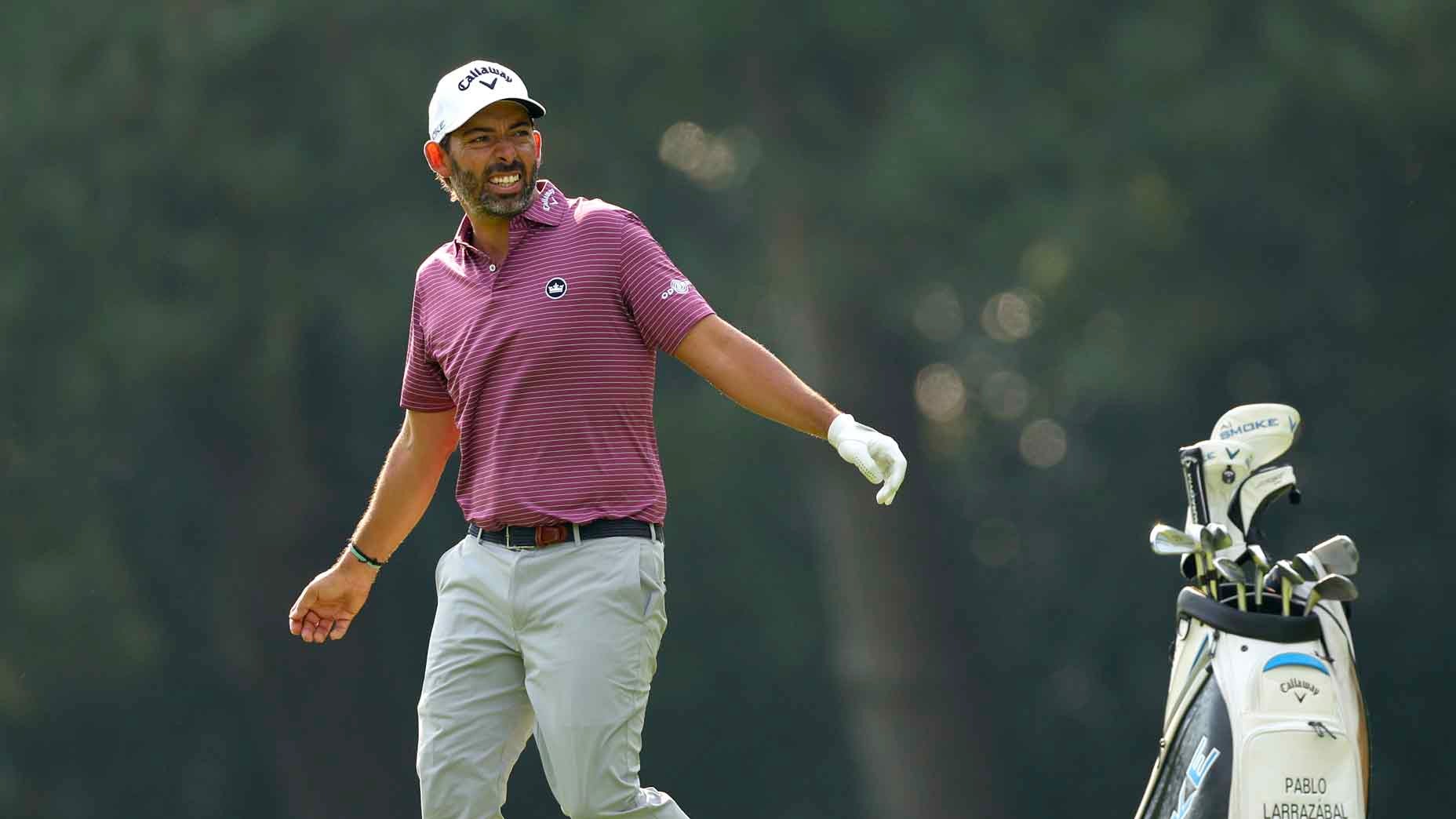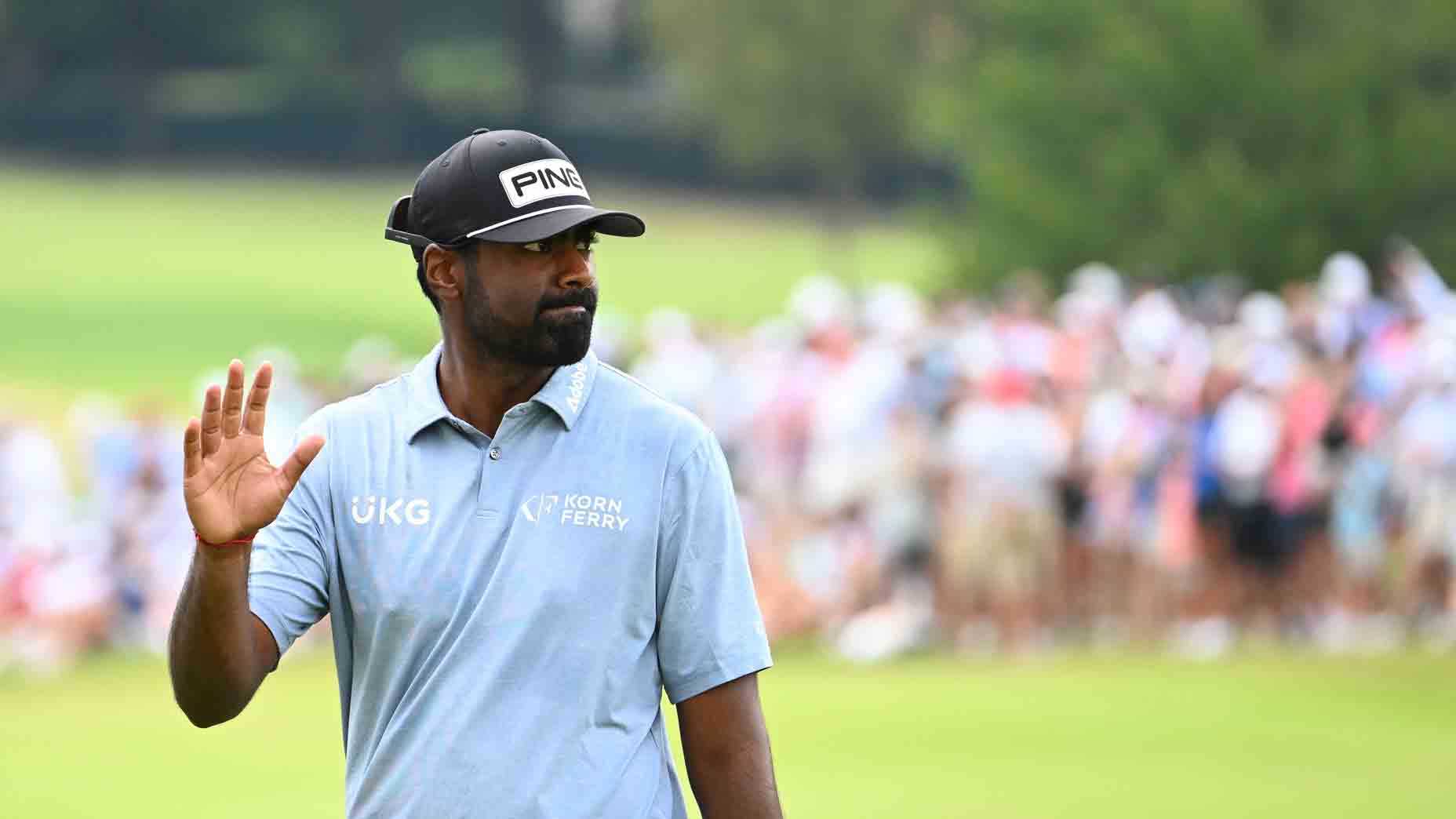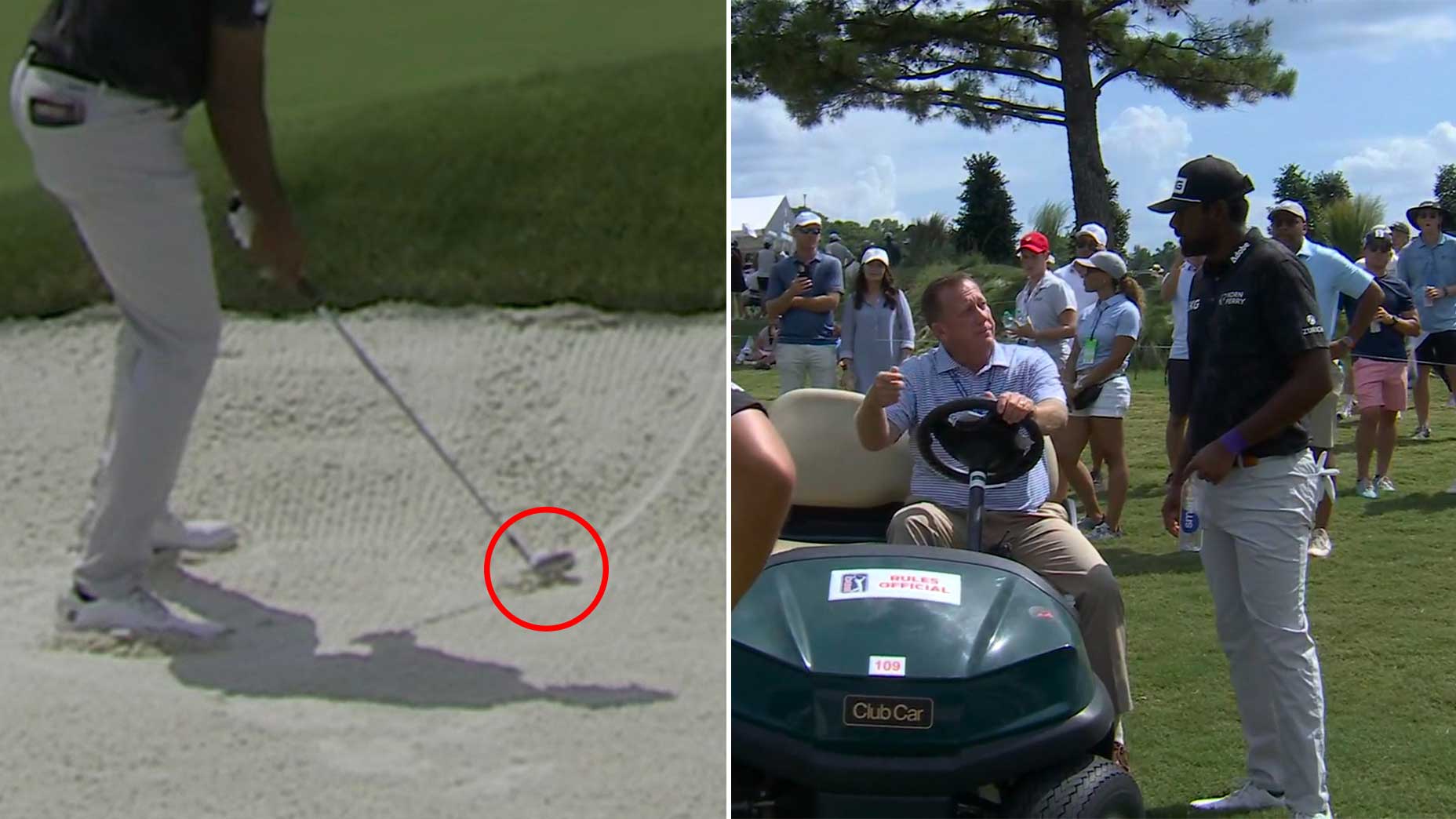Jon Rahm’s miraculous chip-in complicated by rules controversy

There was some question as to whether Jon Rahm's ball moved before his chip-in at No. 16.
Suffice it to say Jon Rahm was glad to have a five-shot lead heading to the 18th tee at the Memorial.
That’s because it turned out to have been a three-shot lead. That margin — three — turned out to be the final gap between him and runner-up Ryan Palmer, but not before a bit of last-minute rules intrigue on the finishing stretch during an action-packed finale at Muirfield Village.
Rahm effectively iced the tournament with a miraculous chip-in birdie at the treacherous par-3 16th, calling to mind Tiger Woods’ iconic flop shot from yesteryear.
But as Rahm finished out on 17, the CBS broadcast made an ominous cut back to a slow-motion replay of that shot, showing Rahm’s wedge pressing down behind his TaylorMade golf ball. Did the ball move?
“From my very first look in slow-mo I did not think it went back to its original position,” Nick Faldo said on the CBS broadcast. “It’s one dimple. It’s one dimple, I’m saying from here.”
“There could be a nuance to that ruling,” analyst Ian Baker-Finch added, recalling the rules change dictating that the ball’s move would have to be visible to the naked eye and not just slow-motion cameras.
That rule, Decision 34-3/10: Limitations on Use of Video Evidence, reads as follows:
“If the Committee concludes that such facts could not reasonably have been seen with the naked eye and the player was not otherwise aware of a potential breach of the Rules, the player will be deemed not to have breached the Rules, even when video technology shows otherwise.”
Rahm was interviewed by Amanda Balionis immediately following his finish at No. 18, and it was clear from his reaction that he had no idea there was a ruling in question, but said he would accept any appropriate penalty.
Rahm ended up taking a two-stroke penalty after meeting with rules official Slugger White. He finished the tournament at 9-under, three shots clear of Palmer (-6).
After the round, White met with the media to explain the ruling.
“The rule is 9.4. It was a ball at rest by the player, moved, and since he didn’t put it back, he was assessed a general penalty, which is two strokes. That’s pretty much the bottom line,” White said, explaining that Rahm had agreed that if the ball had moved, he would take the penalty without argument.
“When he put the club down behind the ball, it moved ever so slightly to the left, so it changed positions. He accepted it like a gentleman and the man that he is, and we just went on with it.”
White added that rules officials weren’t made aware of the ruling until Rahm was already on the 18th tee, which informed their decision not to tell him until after the round.
“Had it been like maybe a one-shot lead, it might have been a different story,” he said. “But I don’t even think that would have been a different story.”
Rahm talked the penalty in his post-round press conference and said that he saw the ball move on replay, though neither he nor White mentioned any limitations on video evidence.
“Had I seen it, I would have said something or maybe asked for a rules official and explained what happened and would have gone from there,” Rahm said. “But I mean, he had to zoom it in the iPad so much to see what was a very minimal oscillation that could have basically just been me putting the club down and all the grass just simply going down. It barely moves at all. Everything goes down with it.
“But the rules of golf are clear, and the ball did move. Unfortunately it’s going to have bittersweet feeling to what was possibly one of the greatest shots of my career, the shot that this Sunday gave me the victory, but that goes to show, you know, I accept the penalty. That goes to show that you have to fight until the end.”
Fight until the end — and build up a five-shot lead, just to be safe.










